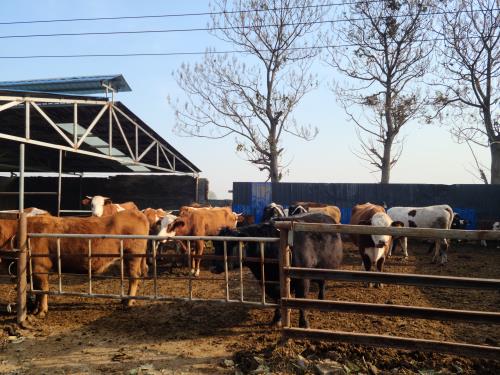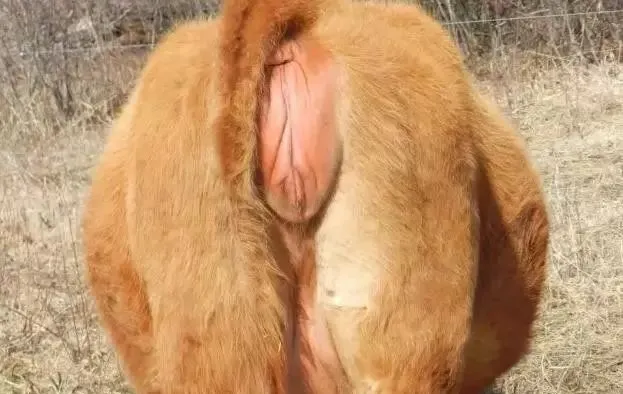Raising cattle isn’t just about feed, shelter, and basic health care. When you rely on reproduction to keep your herd strong and your business profitable, fertility becomes a priority. Over the years, I’ve noticed that the herds performing best on reproduction aren’t always the ones with the fanciest genetics, but the ones where day-to-day management keeps every cow in good reproductive condition.

Whether you run a small beef operation or manage hundreds of dairy cows, improving conception rates means looking at fertility from every angle: nutrition, heat detection, breeding timing, and even technology like veterinary ultrasonography to track reproductive cycles.
Below, I’ll walk through some of the most effective ways to manage cattle fertility, blending field experience with what researchers have confirmed works.
Understanding Fertility in Cattle
Fertility management starts with knowing what’s normal. In a healthy herd:
Cows return to heat within 40–60 days postpartum.
Conception rates per service should ideally be above 50%.
Calving intervals are around 12–13 months.
When these targets aren’t met, profitability drops. Every missed heat cycle can cost weeks of productivity, more feed bills, and delayed calf sales.
Fertility problems often come down to a few recurring issues: poor heat detection, imbalanced nutrition, disease, or improper breeding timing. Tackling them requires consistent observation and record-keeping.
Nutrition: The Foundation of Fertility
One of the first things to check in any fertility program is the feeding plan. Energy deficits, even for a few weeks, can disrupt ovulation. Protein levels, trace minerals, and vitamins like A, D, and E also influence conception.
For example, beef cows grazing on dry, mature forage in late summer may lack enough energy to cycle normally. On the dairy side, high-producing cows sometimes enter negative energy balance right after calving, delaying their return to estrus.
Field Tip: Body condition scoring is one of the cheapest fertility tools you can use. Aim for a BCS of 5–6 (on the 1–9 scale) at breeding.
Heat Detection: Getting the Timing Right
Many fertility problems trace back to missed or misread heats. Traditional visual observation works but can be labor-intensive, especially for large herds.
Signs to watch for:
Standing to be mounted (the most reliable sign)
Restlessness and increased walking
Mucus discharge from the vulva
Changes in eating patterns
To improve detection, some farms use heat-mount detectors, pedometers, or activity collars. Others rely on tail-paint systems where rubbed-off paint indicates mounting activity.
Breeding Timing and Methods
For natural service, ensure bulls are tested for breeding soundness and are in good condition before turnout. In artificial insemination (AI) programs, timing insemination relative to standing heat is critical.
The common “AM-PM” rule suggests breeding cows in the evening if they are first seen in heat in the morning, and vice versa. But with synchronization protocols, AI timing can be fixed for the whole group.
Estrus Synchronization: More Control, Less Guesswork
Estrus synchronization has become a game-changer in cattle fertility management. By using hormones like prostaglandin (PGF2α), gonadotropin-releasing hormone (GnRH), or progesterone devices (CIDRs), producers can bring groups of cows into heat at the same time.
Here’s a quick comparison of common synchronization methods:
| Method | Key Hormones/Devices | Main Advantages | Potential Drawbacks |
|---|---|---|---|
| Prostaglandin Injections | PGF2α | Simple, low-cost, works only on cycling cows | Requires heat detection, not effective for anestrous cows |
| OvSynch Protocol | GnRH + PGF2α | No heat detection needed, fixed-time AI | Higher cost, multiple injections |
| CIDR Program | Progesterone device + PGF2α | Effective for cycling and non-cycling cows | Device cost, requires insertion/removal |
When used correctly, these programs can dramatically boost pregnancy rates and help plan calving seasons more efficiently.
The Role of Veterinary Ultrasonography
Modern cattle fertility management often includes reproductive ultrasonography. This isn’t just for confirming pregnancy — it’s a versatile tool for diagnosing ovarian activity, detecting cysts, and even estimating embryonic age.
Why it works so well:
Early pregnancy detection: Can confirm pregnancy as early as 28 days after breeding.
Cycle stage identification: Helps decide the right timing for synchronization or breeding.
Health monitoring: Detects reproductive tract infections or fluid accumulations that might prevent conception.
Some farms combine ultrasound records with herd management software, creating a powerful database for tracking fertility trends over multiple seasons.
Bull Management: The Other Half of Fertility
It’s easy to focus only on the cows, but bulls contribute 50% of the equation. Poor bull fertility can silently drag down conception rates.
Key points:
Annual breeding soundness exams are non-negotiable.
Maintain bulls at optimal body condition (BCS 5.5–6).
Avoid over-use; young bulls shouldn’t service more than 20–25 cows in a season.
Check for foot and leg problems that could limit mobility.
Disease Prevention in Fertility Programs
Reproductive diseases like bovine viral diarrhea (BVD), infectious bovine rhinotracheitis (IBR), leptospirosis, and campylobacteriosis can devastate conception rates.
Control measures include:
Vaccination before breeding season.
Biosecurity protocols for purchased animals.
Regular testing and culling of persistently infected individuals.
Seasonal and Environmental Factors
Heat stress in summer can lower conception rates dramatically, especially in dairy herds. Shade structures, fans, and cooling systems reduce the problem.
Cold weather fertility drops are less common but can occur if cows are underfed or exposed to prolonged harsh winds without shelter.

Record-Keeping and Data-Driven Decisions
Without good records, it’s nearly impossible to identify fertility problems early. Keep track of:
Calving dates
Heat cycles and detection accuracy
Service dates and outcomes
Body condition scores
Health and treatment records
This data helps pinpoint patterns — for example, if conception rates are consistently lower in heifers bred in August, heat stress might be the culprit.
Putting It All Together
The most successful cattle fertility programs don’t rely on a single magic bullet. They combine:
Balanced nutrition
Accurate heat detection
Well-timed breeding or synchronization
Health monitoring via ultrasound and veterinary checks
Bull fertility management
Strong biosecurity and vaccination programs
When these elements work together, the herd’s reproductive performance becomes more predictable, and the calving season runs smoother.
Real-World Example
On a mid-sized beef farm in New Zealand, a producer introduced a combination of CIDR synchronization, ultrasound pregnancy checks, and a more structured nutrition program. Within two breeding seasons, conception rates jumped from 78% to 92%, and the calving window tightened from 12 weeks to just under 9.
The farm also reduced the number of open cows culled at year-end, saving on replacement costs and improving overall profitability.
Final Thoughts
Fertility management in cattle isn’t just about getting cows pregnant — it’s about keeping the whole reproduction process efficient, predictable, and cost-effective. By blending sound nutrition, smart technology, and disciplined management practices, producers can consistently achieve higher conception rates and healthier calves.
When you treat fertility as a year-round focus rather than just a breeding-season concern, the payoff is visible in the calving pasture, the sale barn, and the farm’s bottom line.








